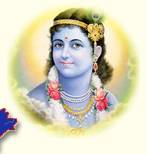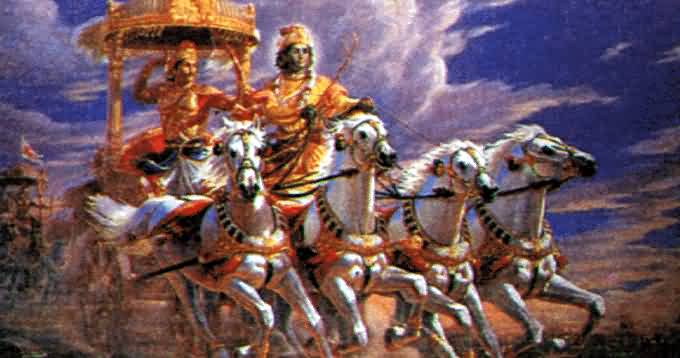


|
Difference Between The Rama And Krishna Avatars "Rama Avatar, for instance, Rama conducted himself as if he was subject to Maya, but upheld Dharma for promoting the welfare of the world. The Krishna Avatar was different. Keeping Maya under control, he manifested his Leelas (miraculous deeds). That is why Vyasa, in his Bhagavatam, characterized Krishna as 'Leelaamaanusha Vigrahah' (The Divine manifesting as man for performing His Leelas). The Bhagavata has described in detail the Leelas of Krishna and proclaimed his glory to the world. In the Krishna Avatar, Krishna not only performed many marvellous deeds, but also taught the Supreme Wisdom to the world. He was one who had transcended the Gunas, but, for the sake of regeneration of the world, behaved as, if he was influenced by Gunas, and delighted the world by his deeds. Krishna did everything, whatever he spoke or whatever action he did, for the good and well-being of the world." Sai Baba, SS, 9/90, p. 226 "When Dharma was showing signs of decline, Rama appeared to protect the earth, his consort and righteousness (Dharma). It was for this three-fold purpose that the Rama Avatar took place.
By the time of Krishna Avatar, the forces of wickedness had grown to greater proportions. Krishna was not concerned much about the earth or the wife. His main concern was with Dharma. When Dharma is firmly established, the earth and the Dharma-Patni (wife) are also duly protected. In this context, Rama is described as 'Maaya Maanusha Vigraha' ('Maaya in human form). In the story of Rama, it is related that Rama lamented over the loss ofSita. In the Krishna Avatar, the picture is different. Women were in distress for the sake of Krishna. In the Rama Avatar, Rama was provoked to take arms against evildoers. In the Krishna Avatar, Krishna provoked the conflict and fought the evildoers. In the Rama Avatar, duty comes first and joy later. In the Krishna Avatar, joy comes first and then duty. Looked at, in this way, the difference between the Maya-avatar of Rama and the Leela-avatar of Krishna, will be apparent. Krishna was always immersed in bliss. Whether it was a burial ground, or a battlefield or a heaven of peace, he remained the same. Krishna was standing between two immense opposing armies and he sang a song. That is the Gita, which means song." Sai Baba, SS, 9/90, p. 229 "In the Treta Yuga, the divine elements were on one side and the demonical elements were on the other. At the time of the Rama Avatar the divine elements were in Ayodhya and Kishkinda and demonic forces were in Dandakaranya. The two elements were in separate regions. Rama waged war against the Raakshasas (demons) in Dandakaranya (forest) and protected the Rishis (sages). This is the inner meaning of the Rama Avatar in Treta Yuga. In the Dwapara Yuga, the divine and demoniac elements - namely, the Pandavas and Kauravas - were in the same kingdom. In such a situation, Krishna gave his army to the Kauravas and without wielding any weapon himself, gave his support to the Pandavas in the great battle of Kurukshetra. He used others as instruments. But today, these divine and demoniac forces are battling in each human being. This is the mark of the Kali age. In Treta Yuga, Rama fought the battle in person. In Dwapara Yuga, Krishna played the role of a witness, using others as his instruments. He did not engage in the battle himself." Sai Baba, SS, 1987, p. 183
|
